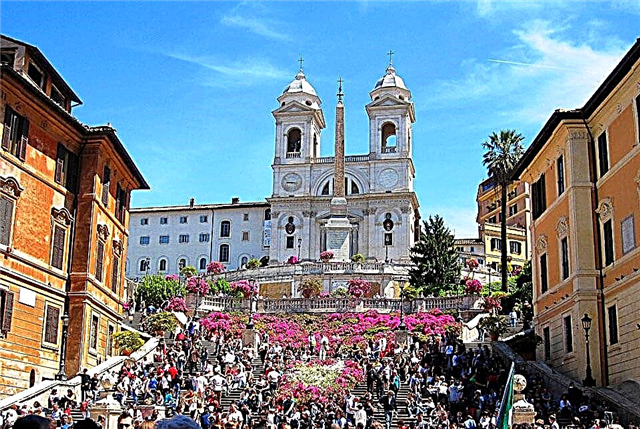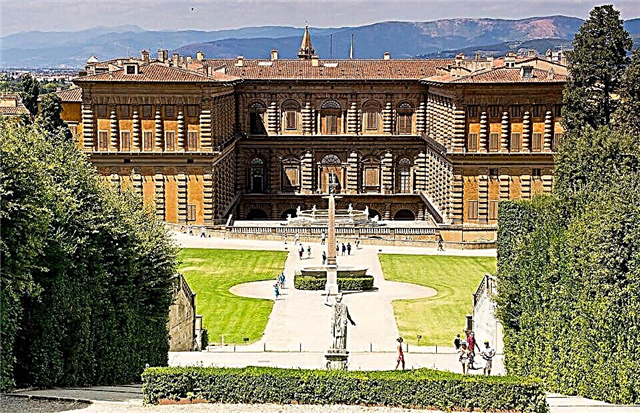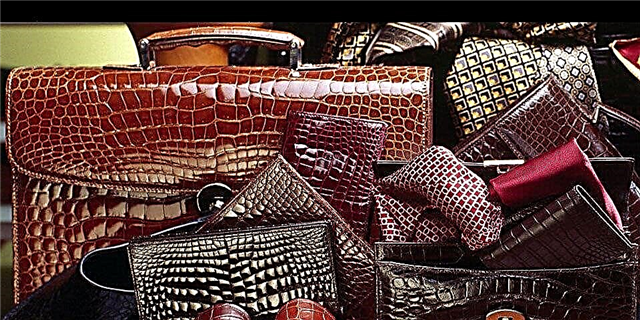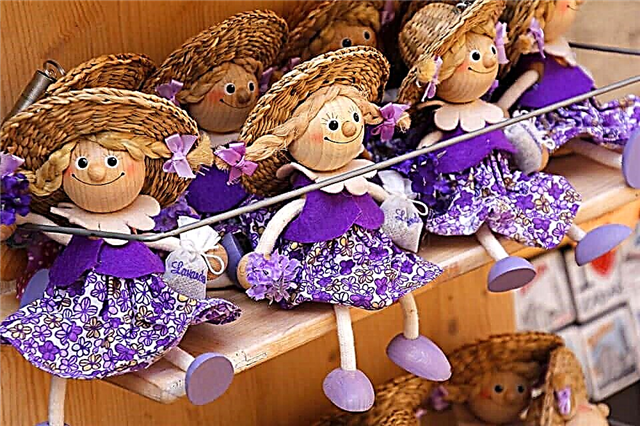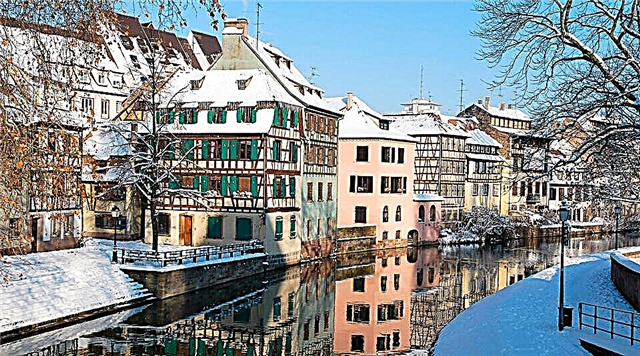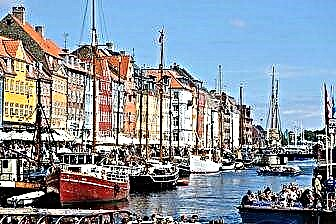Copenhagen is a city of restless cyclists, summer cultural festivals and the birthplace of everyone's beloved Hans Christian Andersen. Indeed, locals have long preferred two-wheeled vehicles to cars and ride a bike in any weather and in any clothing, and the number of cultural events in the Danish capital is so great that it will be difficult to make a decision about where to go.
The Danish capital has a large number of ancient castles and historical monuments, but the city can also delight you with masterpieces of modern architecture. Just what is the "black diamond" of the city library and the stunning building of the oceanarium.
Copenhagen is composed entirely of atmospheric regions. A historical spirit hovers over Nyhavn, freedom and fun are registered in Christiania, and an active and purposeful student fraternity rules in Norrebro.

The best hotels and hotels at affordable prices.
from 500 rubles / day
What to see and where to go in Copenhagen?
The most interesting and beautiful places for walking. Photos and a short description.
The little Mermaid
A small sculpture in the Copenhagen port (height - 125 cm), depicting the famous character of the fairy tale G.H. Andersen. The writer lived and worked in Copenhagen. The monument was created by the master E. Erickson at the request of the founder of the beer company "Carlsberg" K. Jacobsen. It is believed that the sculptor's wife, a famous ballerina of the Royal Theater, was the model for The Little Mermaid. Over time, the statue became a symbol of the city and the whole of Denmark.
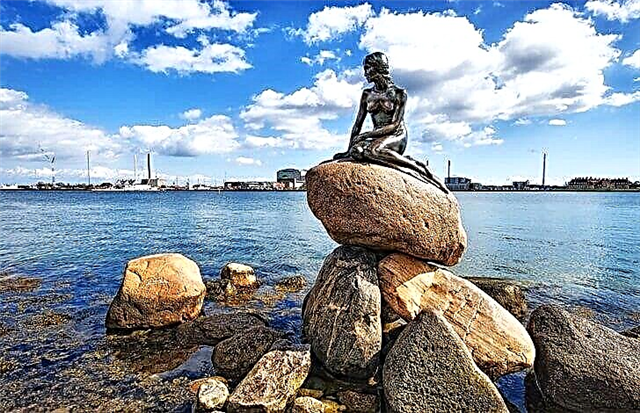
Nyhavn
Nyhavn or in translation "New Harbor" is a city canal with a length of just over 1 km. It was dug at the end of the 17th century under King Christian V. The area that grew up around the canal was chosen by sailors and adventurers. Until 1980, it was a hectic place. Here was the local Red Light District, and it was better for a respectable citizen with a tight wallet to stay away from Nyhavn. After restoration, the area has become a popular tourist attraction.

Fountain Gefion
The fountain was built in honor of the 50th founding of the Carlsberg brewery and was donated to the city. The sculptural group was created at the end of the 19th century, it depicts the characters of the famous legend. According to legend, the Swedish king Gulfe promised the goddess Gefiona a gift of land that she could plow in one night. The goddess turned her sons into bulls and together with them worked the territory, which later became Denmark.

Stroeget Street
Pedestrian street, which is considered one of the longest in Europe. Stroeget's architecture is a harmonious blend of historic buildings and modern buildings. Several city attractions are concentrated here. As in all popular tourist cities in the world, this place is built up with restaurants, cafes and shops focused on the visitors of Copenhagen. Since the 60s. the street became pedestrianized.

Copenhagen City Hall
An architectural structure of the early XX century, built according to the project of M. Nyurop. The main building element of the facade is red brick. The town hall is crowned by a 105-meter tower, to the top of which there are 300 steps. The interior is decorated with J. Olsen's astronomical clock. They show not only the phases of the moon and periods of solar activity, but also contain the church calendar.

Christiansborg
The castle is located on the island of Slotsholmen (King's Island). It was built on the site of a 12th century fortress. Christianborg was built in the middle of the 18th century under King Christian VI in the Baroque architectural style. Until the end of the century, it was the royal residence, but after the fire, the royal family moved to Amalienborg. The building was restored in the 19th and 20th centuries, which is why new extensions appeared in the architectural ensemble. Today, the parliament sits in Christianborg.

Rosenborg Castle
The complex is located on the territory of the Royal Garden. It was built in the first half of the 17th century under King Christian IV. The ruler even created several drawings for the project himself. Rosenborg was supposed to become a summer residence, but the monarchs did not live here permanently, but only arranged official receptions. In 1838, a museum was organized on the territory of the castle, where the treasures of the Danish crown are exhibited.

Amalienborg palace
An architectural complex of the 18th century, consisting of four buildings and an adjacent square. Each building bears the name of a Danish monarch. The predominant architectural style of buildings is rococo. The palace square is decorated with a sculpture of the ruler Frederick V. Amalienborg houses the official residence of the royal family and a public museum, where you can admire the interiors, rich decoration, furniture, sculptures, paintings, clothing and household items.

Fortress Kastellet
Fortified structure of the 17th century, which still has the status of a military facility. Nothing is left of the fortress walls, but embankments, ancient cannons, barracks have survived. There is no full access to the territory of the fortress, since soldiers still live here. The fortress is surrounded by a park with a picturesque Baroque church, an old windmill and other attractions.

Church of Grundtvig
The 20th century building, built in the style of expressionism, mixed with late Gothic. The creator of the project J. Klint in his creation tried to combine the architectural features of traditional Danish churches with new progressive elements. Due to its unusual and interesting architecture, the church is one of the most popular in Copenhagen. The temple belongs to the Lutheran community of Copenhagen.

Church of the Savior
Protestant temple with a spiral bell tower, to the top of which 400 steps lead. The gilded bell dome is crowned with the figure of Christ. The observation deck offers a magnificent view of the Old Town and Copenhagen Bay. The church was built in the 17th century under Christian V - an ardent companion and patron of Lutheran teaching. Architect Lambert von Haven worked on the project.

Frederick's Church
The temple began to be built in the 18th century in a pompous baroque style, but the work was delayed for almost 150 years due to lack of funds. At the end of the 19th century, the necessary amount was found and the construction was completed, but the expensive Norwegian marble had to be abandoned and cheaper limestone was used. The church is crowned with a huge dome with a diameter of 31 meters. The temple is named after King Frederick V, as the monarch personally laid the first stone in its foundation.

New Carlsberg Glyptotek
A collection of works of art organized at the end of the 19th century on the basis of the collection of K. Jacobsen, the founder of the Carlsberg company. The museum funds contain many masterpieces: works by Gauguin, Degas, Renoir, Manet and other famous painters. There is also a rich collection of Rodin sculptures and icons. The building itself is a picturesque architectural structure with rich décor and decoration of the Renaissance.

National Museum of Denmark
The largest museum in Copenhagen, which contains exhibits on the history of Denmark. Items from the Stone Age, the Viking Age, the Middle Ages, and the New Age are exhibited here. Interesting examples: Trunnholm chariot, stones with ancient runic signs, golden horns from Gallehus. The collection is housed in an 18th century palace. The museum often triples thematic exhibitions.

State Museum of Arts
An art gallery that grew out of the private collection of Christian IV. The building for the museum was erected at the end of the 19th century in the Renaissance style.In 1998, another building was built, which was connected to the old one using a covered gallery. The State Museum of Arts exhibits several thousand paintings, sculptures, prints, drawings and sketches. Among the masterpieces are paintings by Titian, Michelangelo, Matisse, Rembrandt, Picasso, Modigliani.

Thorvaldsen Museum
The museum is located in the heart of Copenhagen on the island of Slotsholmen. It is dedicated to the famous Danish painter and sculptor B. Thorvaldsen. The master lived outside Denmark for more than 40 years, but returned to his native land to die. The building was erected in the middle of the 19th century in a strict classical manner. The collection of the museum contains works by the master, created by him in different periods. His grave is located in the courtyard of the building.

Carlsberg Beer Museum
The exposition is located in the old building of the Carlsberg plant, which is no longer open. On the territory of 10 thousand square meters there are all kinds of machines and installations for the production of a foamy drink, steam engines, boilers, barrels. You can also inspect workers' clothing and cutlery. There is a bar at the museum, where a tourist can taste several dozen types of beer "Carlsberg" and "Tuborg".

Experimentarium
The modern museum is an attraction dedicated to scientific and technical research. Here you can independently stage experiments, touch all the exhibits, study various natural phenomena. For example, you can test your friends on a real lie detector, play with optical illusions, organize your own "home" volcano or tornado. The experimentarium will be especially interesting for children.

Copenhagen Opera House
The theater building was erected in the 2000s. financed by a private fund and donated to the state (anyway, the investor returned almost the entire amount spent as a tax benefit). The grand opening of the stage took place in 2005 in the presence of Queen Margrethe II and Prime Minister Anders Fogh Rasmussen. The opera "Valkyrie" by R. Wagner was chosen as the premiere performance, where the main role was performed by Placido Domingo.

Royal Theater of Denmark
One of the oldest theaters in the country, founded at the beginning of the 18th century. The first building stood for only 6 years, after which it was destroyed by fire. The restoration began in 1748. Since then, the theater has been rebuilt several times. In 1874 a new building was built, as the old one was hopelessly damaged due to constant "improvements". The theater has two venues - the main one for dramatic performances and an additional one for ballet and opera.

Royal Library of Denmark
The library is located in a building of modern architecture on the waterfront. It received the unofficial name "black diamond" because of its shape and deep, rich, shiny black facade under the sun's rays. The library is considered one of the largest book collections in the world. The funds contain all printed exhibits in Danish, which have been published since the end of the 15th century.

National Aquarium of Denmark
Oceanarium "Blue Planet", consisting of 70 pools, which are inhabited by several thousand representatives of the marine fauna. It is the largest and most technically advanced in the whole of Northern Europe. The architectural complex of the oceanarium is a real masterpiece of modern urban planning. The aquarium is visited by several hundred thousand people annually; it is one of the 10 most popular attractions in Copenhagen.

Round Tower
An old observatory from the 17th century and part of a complex of university buildings. Several centuries ago the famous Danish astronomers P. Horrebow and O. Roemer worked here. The tower is mentioned in one of G.Kh. In the upper tier of the structure there is a planetarium, where a wide spiral staircase leads. One of the engravings on the wall depicts Tsar Peter I, who ascended the tower on horseback in 1716.

Börsen stock exchange building
Copenhagen Stock Exchange founded by Christian IV. The building was built in the Renaissance style. The high 56-meter spire, made in the form of intertwining dragon tails, symbolizes the union of Norway, Denmark and Sweden. On the first floor of the exchange there was a warehouse, and on the second - trading rooms. At the beginning of the 20th century, the building was attacked by the unemployed, but no major destruction followed. Today the exchange is used for cultural events, dinners and receptions.

Øresund tunnel bridge
The bridge connects the Danish capital with the Swedish city of Malmö. The movement of automobile and railway transport is allowed on it. The building was erected in 1999, the official opening took place in 2000 in the presence of the royal couple - Margrethe II and Karl Gustav XVI. The bridge is toll-free. Substantial discounts are set for residents who commute to work from Malmö to Copenhagen (or vice versa) every day.

Botanical Garden
The garden is located near Rosenberg Castle and adjacent to the Royal Gardens. It covers an area of 10 hectares. On a rather impressive part of the territory there is a covered glass gallery, reminiscent of the design of the London Crystal Palace. The botanical garden contains plants from all over the world - from representatives of the harsh northern flora to delicate tropical flowers.

Tivoli park
An amusement and amusement park, one of the oldest and best in Europe. According to some tourists, Tivoli is even more interesting than Disneyland Paris. On the territory of the park there is a concert hall that regularly hosts festivals of classical and rock music, its own hotel, a pantomime theater and many expensive restaurants. Here you can ride old carousels, watch free street performances and admire fireworks.

Free city Christiania
An area within the Copenhagen city limits, separated from the capital by a series of houses and walls. Christiania is known for the fact that complete "freedom" reigns here, that is, soft drugs are legally sold and used. Creative personalities, representatives of bohemians, freedom-loving fighters for justice and other extraordinary people live here. The police regularly fight for order in Christiania and try to resettle the area, but the authorities are failing.

Direhavsbakken amusement park
Direhavsbakken was founded in the 16th century. It is the second most popular with locals and tourists after Tivoli. As in other similar parks, there are many standard rides and carousels operating here. Fairy-tale characters entertain adults and children at theatrical performances, families arrange picnics in the shade of the green lawns, and the Danish folk spirit hovers over the alleys.

Copenhagen Zoo
The zoo was founded in the middle of the 19th century and is considered one of the oldest in Europe. Animals are collected from all over the world and kept in suitable climatic conditions. Especially for children, there is a "Rabbit Town" on the territory, where little visitors play, ride a pony and eat ice cream. The zoo is located near the historic center of Copenhagen.



